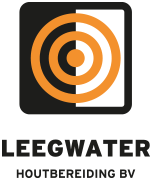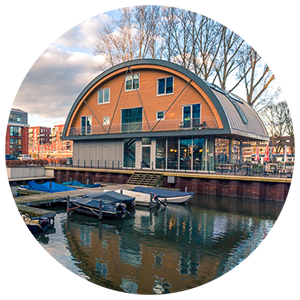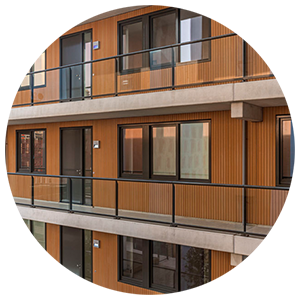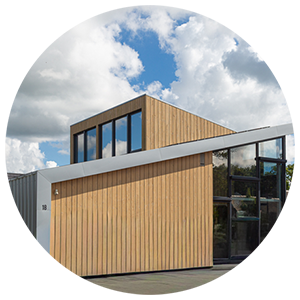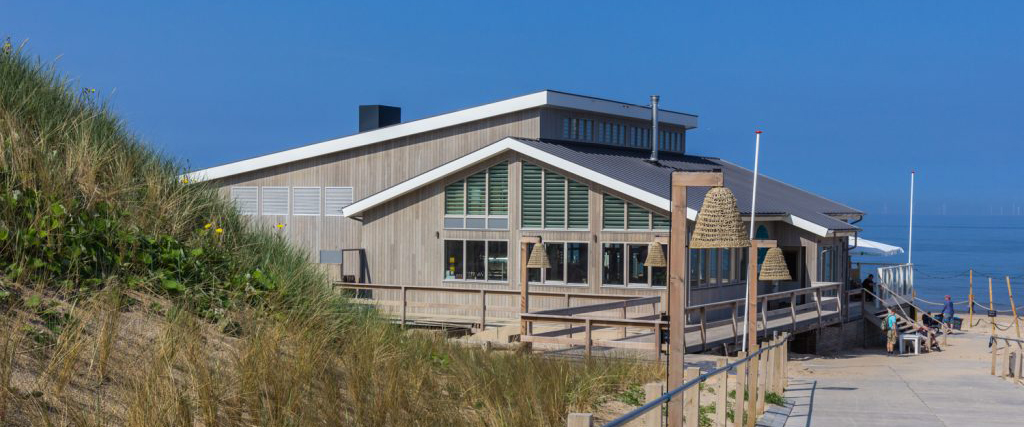At Leegwater Houtbereiding, we have been working for over 70 years with a carefully selected range of timber species for facade cladding. Choosing the right type of wood is essential for the appearance, lifespan and sustainability of a building. On this page, we highlight several timber species with which Leegwater has extensive experience and which have proven to be highly suitable for use in facade cladding.
Commonly used timber species for facade cladding
At Leegwater, we primarily treat the following timber species:
Spruce
Spruce wood comes from the Norway spruce (Picea abies), a softwood species that is widely distributed across the boreal zone of the Northern Hemisphere. The wood is lightweight, dimensionally stable and easy to work with. Through impregnation, its natural durability is significantly enhanced, making spruce suitable for facade applications with a long service life. Its neutral appearance allows for broad applicability across a wide range of architectural styles.
Applied in: SAWA, Rotterdam.
Thermally modified spruce
Through thermal modification, spruce wood is structurally enhanced without the use of chemical additives. The process gives the wood a warm, darker colour, increased dimensional stability and improved resistance to moisture, fungi and insects. Thermally modified spruce is particularly well suited for facade cladding with a modern, sleek appearance.
Applied in: Wilhelminawerf, Utrecht.
Thermally modified fraké
Fraké is a hardwood species originating from West Africa. After thermal modification, the wood is characterised by high dimensional stability and durability. Its distinctive appearance—with pinholes and natural colour variations—gives facades a vibrant and organic look. Fraké is frequently used in architecturally sophisticated cladding projects.
Applied in: Republica BOB W, Amsterdam.
Oregon Pine
Oregon Pine, also known as Douglas Fir from North America, is distinguished by its fine grain structure and high strength class. Unlike European Douglas, Oregon Pine is almost exclusively rift sawn, resulting in a uniform grain pattern and minimal deformation. The wood is highly suitable for premium facade applications where dimensional stability and aesthetics are essential.
Applied in: 100 Hoog, Rotterdam.
European Douglas fir
European Douglas Fir originates from sustainably managed forests in Europe. The wood features a warm, reddish hue and a robust appearance. Though coarser in texture than Oregon Pine, European Douglas offers solid mechanical properties and an attractive price-to-performance ratio. When combined with impregnation or coating, it is highly suitable for use as facade timber in both traditional and contemporary building projects.
Applied in: Landal Berger Duinen, Schoorl.
These timber species are treated, dried, coated or fire-retardant processed by us, depending on the application and the desired result.
Colour, appearance and weathering: why choose wood?
Wood is a natural and renewable building material. Its warm appearance, visible grain structure, and the way it weathers under sunlight make it a popular choice among architects and developers. Each timber species has a unique colour and texture that evolves naturally over time. Whether you prefer a warm, darker tone or a light, contemporary look – wood brings character to any facade.
Moreover, wood aligns perfectly with the principles of sustainable construction. When combined with coatings, stains or fire-retardant treatments, it retains both its aesthetic value and functionality over time.
Suitability for interior or exterior applications
Not all timber species are naturally suitable for outdoor use without treatment. Species such as Fraké and Spruce have limited natural durability, but their performance can be significantly enhanced through thermal modification, making them appropriate for facade cladding and other exterior applications.
Timber types such as Oregon Pine and European Douglas are often selected for their robust appearance but require additional attention in terms of processing and protection against the elements.
Fire safety of timber cladding
At Leegwater, we offer various options for fire-retardant treatment of wood. This significantly improves the fire safety of the material without compromising its appearance. The choice of timber species plays a role in this process, as some woods absorb fire-retardant agents more effectively than others. Our advice is always tailored to the project, in accordance with applicable building regulations.
Maintenance and service life
The lifespan of timber cladding depends on the wood species, the treatment applied and the level of maintenance. Thermally modified timber species typically offer a longer lifespan and require less maintenance than untreated wood. Professional coating or impregnation protects the wood against moisture, UV radiation and fungal growth.
At Leegwater, we always recommend a finishing method that aligns with the location and desired maintenance level of your project.
Sustainable origin and workability
All of our timber species originate from responsibly managed forests and are FSC® or PEFC certified. This guarantees ecological, social and economic responsibility throughout the supply chain. Sustainability starts at the source.
Besides origin, the workability of the timber is also essential. Each species has specific properties that determine how it can be sawn, milled, dried, impregnated and finished. For example, Fraké is well-suited for finer profiling, whereas Douglas lends itself to a more robust appearance. By selecting a species that matches the intended application and finish, both aesthetics and sustainability are ensured.
Impact of location and climate conditions
The choice of a timber species for cladding also depends on the project’s location. Coastal areas, with exposure to salt air and high humidity, impose different requirements than urban or wooded environments. We take local climate conditions into account and advise on the most suitable species and treatments for each specific context.
Tailored advice
Would you like to know which timber species is best suited for your facade cladding? Our specialists are happy to assist. Together, we will find a solution that fits your design, environment and technical project requirements. Please feel free to contact us for a no-obligation consultation.

